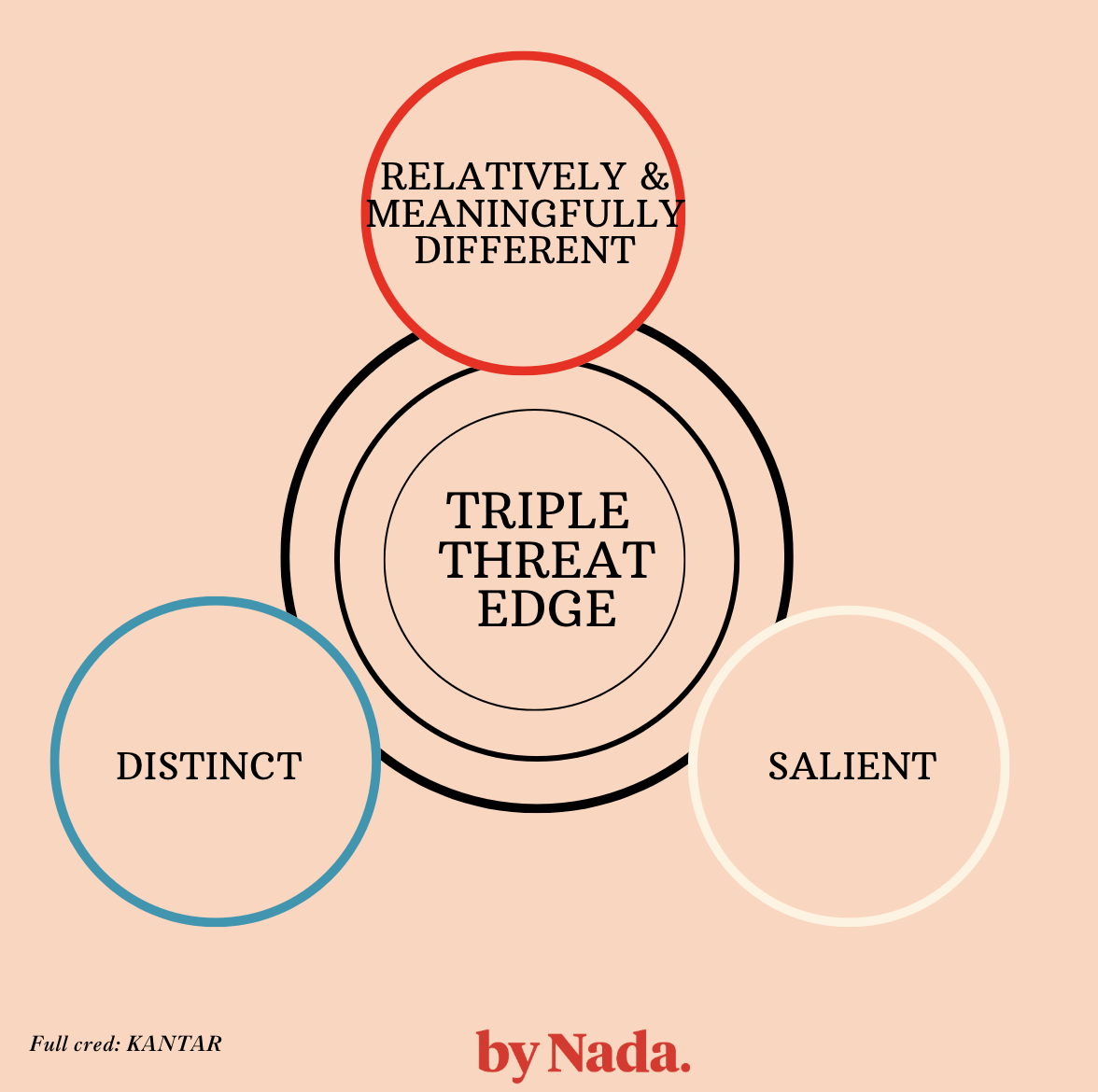TEN BIGGEST MISTAKES I SEE MY CLIENTS MAKING* 04. IGNORING THE TRIPLE THREAT EDGE
Said the classic brand skeptic: Brands are brands. Brands are all the same: look the same, talk the same, act the same. I buy from any brand because they offer the same thing. I don’t remember any brand I see.
Said no one: People are people. People are all the same: look the same; talk the same; act the same. I’m friends with everyone because everyone likes the same things. I don’t remember anyone I’ve met because they’re all the same.
I’ve heard the first, never the second. Both I’ve written to be eristic.
When “brand strategy” is done right, you make your brand valuable – both personally and commercially. Our brains are lazy. Brands are shortcut tools for brains. You can hate brands or claim to be indifferent, but you are using them to shortcut to assumptions, without even realising it.
So, how do you make your brand the one people remember and want to invite to their dinner party?
Here’s your cheat sheet to being a triple threat:
(Relative & Meaningful) Difference: How people feel your brand stands out from competitors in a way that matters – read: emotionally connects, to your target market.
Distinctiveness: When your brand has a particular look, feel and experience - easily understood and recognisable by its target market.
Salience: Being top-of-mind and/or situationally aware to (you guessed it) your target market.
Why do these matter? If you get it right, your brand:
BECOMES PRESENT: Recognisable; memorable at the right time/right place; valued for its differences.
CONNECTS THROUGH BUILT PREDISPOSITION: Your market doesn’t need to love you, but you need them to want you. Manage those customer experiences well.
GROWS: Sell. Sell for more . Sell for longer.
DIVERSIFIES: Innovate, innovate, innovate.
I’ll be adding colour to the first three above, in following posts of this series. For more in diversification and innovation, head here for biggest mistake #3: TOO MUCH LOVE FOR ALL THINGS SHINY.
And one of the most interesting and insightful conclusions (full creds to KANTAR on this) is how the importance of differentiation and salience fluctuates depending on your category and how young or old your brand is. If pre-growth/young, emphasise your DIFFERENCES. If post-growth/mature, amplify your MEANING and SALIENCE.
Hope you found this helpful. I’d love to hear your thoughts.
*A ten-part, snappy 500-word series to help identify the ten biggest mistakes I see MDs, Founders, and CEOs of SMEs making when it comes to strategic branding and marketing.


